Summer in Bilbao and Rioja paints the landscape in vibrant greens and golden hues. The vineyards are at their peak, the Atlantic breeze carries the scent of wildflowers, and these two well-connected territories transform into an outdoor enthusiast’s paradise. While wine cellars remain cool retreats, the real action happens outside – where trails wind through ancient vines, coastal paths reveal dramatic cliffs, and horses carry you through landscapes that have inspired generations.
Pedal Through Living History
The rolling hills of Rioja create perfect cycling terrain, with each vineyard telling a story that dates back centuries. The medieval town of Laguardia sits upon a warren of 300 cellars carved from rock, making it a mandatory stop for any cycling adventure through the region.
Bodegas Izadi continues to offer their signature e-bike experience through Finca El Regalo, their emblematic vineyard planted in 1936. This 3-kilometer electric bike route through their “Singular vineyard” classification allows you to navigate the gentle slopes while learning about sustainable viticulture practices that have shaped the region.
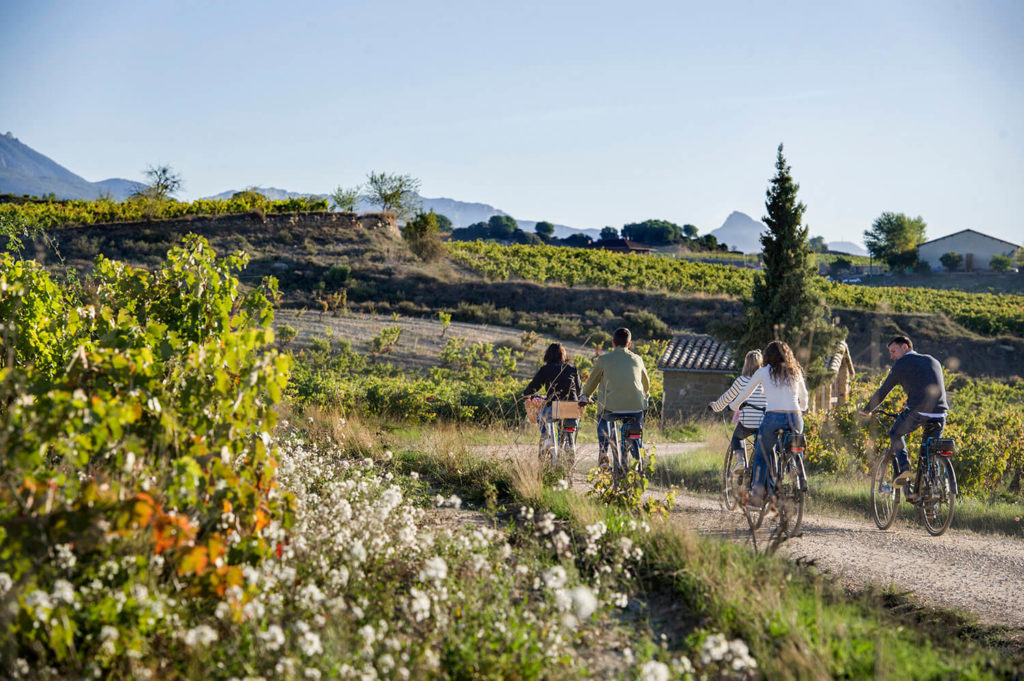
Bodegas Izadi.
For another example of immersive experience, Bodegas Lecea provides guided e-bike tours through their 16th-century estate. The combination of their historic cellars and modern sustainable farming creates a perfect backdrop for understanding how traditional methods adapt to contemporary challenges.
The coastal routes around Bilbao offer a different perspective entirely. Self-guided tours average 50 kilometers daily along moderate terrain, taking cyclists through fishing villages, industrial heritage sites, and pristine beaches where the Guggenheim’s titanium curves reflect the changing light.
Hooves and Vines: The Equestrian Experience
Nothing connects you to the land quite like exploring it on horseback. While specific horseback riding offerings through vineyards vary seasonally, several operators in the Rioja region provide equestrian experiences that combine wine tourism with traditional horsemanship.
The Camino de Santiago passes directly through Rioja, creating natural riding routes that connect vineyard properties with historic pilgrimage paths. Local equestrian centers work with wineries to create customized experiences that typically include visits to family-owned bodegas where generations continue ancestral winemaking traditions.
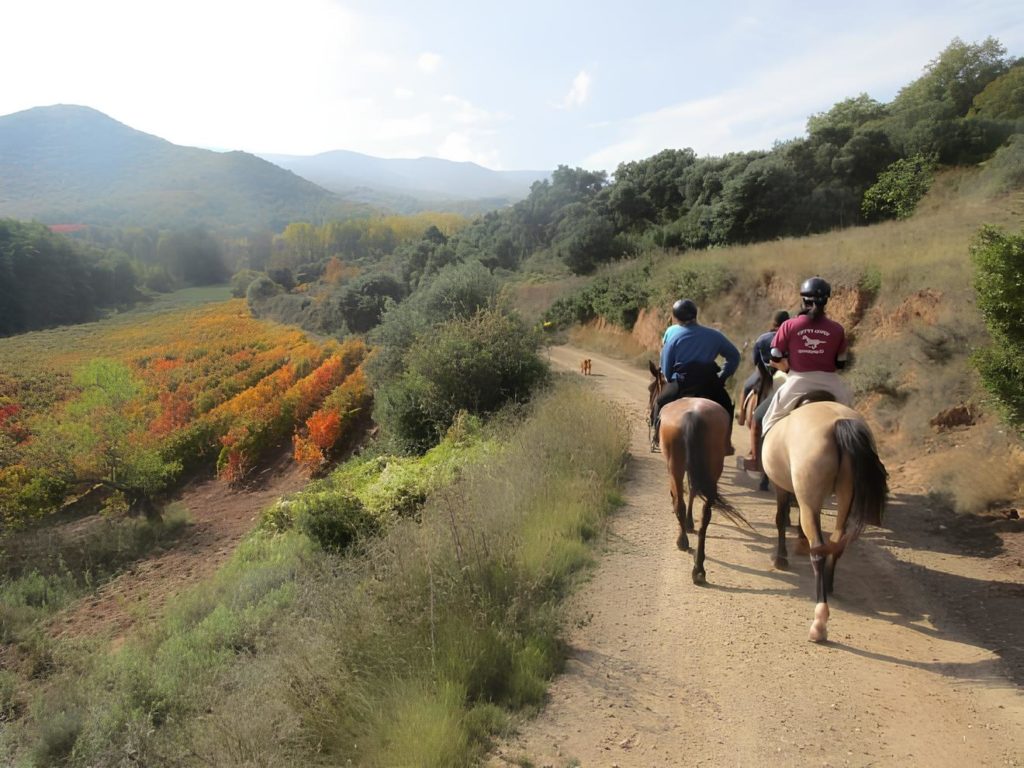
La Rioja Turismo.
Walking the Ancient Paths
Summer walking in these two territories means following paths that have connected communities for millennia. Riojatrek offers guided hiking tours through spectacular countryside covered with vineyards while learning about the types of grapes that grow in Rioja and visiting different wineries along the trail. These moderate-rated walking tours offer approximately daily walks among beautiful little villages and hundred-year-old vineyards. Riojatrek has been awarded with the Best Of Wine Tourism 2025.
Romotur provides a specialized A Walk through the Vineyards experience, featuring 3-night packages that combine winery visits with hiking through Rioja Alavesa. This immersive experience allows visitors to explore regional gastronomy while tasting the area’s finest wines during vineyard walks.
The Camino de Santiago passes directly through Rioja, and summer and of course autumn walking conditions are ideal for exploring sections that wind through vineyard country. The route from Logroño to Navarrete takes you past working bodegas where pilgrims have stopped for centuries.
As they traverse the heart of Logroño’s historic district along Ruavieja Street, they’ll discover centuries-old calados – underground wineries carved into rock that have served for centuries for the conservation and aging of Rioja wine.
One of this ancient calados can be enjoyed at the Center for Rioja Culture in Logroño.The calados in this área represent fundamental historical structures in Rioja’s winemaking tradition – they are underground wineries carved directly into the ground, with constant temperatures ideal for wine preservation. Many of these calados in Logroño date from the 16th and 17th centuries, and some even from the 19th century, representing centuries of winemaking tradition that wine enthusiasts can witness firsthand along their pilgrimage route.
Continuing their journey, wine and hiking aficionados will encounter Bodegas Corral in Navarrete, located right on the Camino de Santiago route, where they can explore the ruins of the ancient Pilgrims’ Hospital of San Juan de Acre, whose remains are still preserved on the winery’s estate.
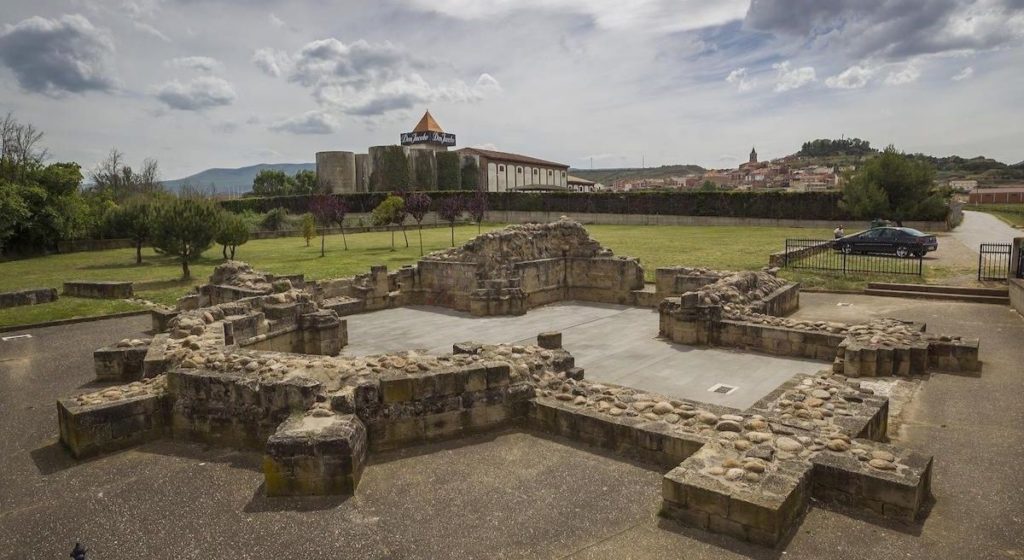
Ruins of the Hospice of San Juan de Acre near Bodegas Corral (Photo: Bodegas Corral).
In Bilbao-Bizkaia, the Arrazola Greenway in Axpe-Atxondo runs under the imposing shadow of Anboto along an old railway line, perfect for those who want to enjoy nature in an accessible way. The Visit Bizkaia official site highlights five trails specifically designed to experience the region’s natural beauty.
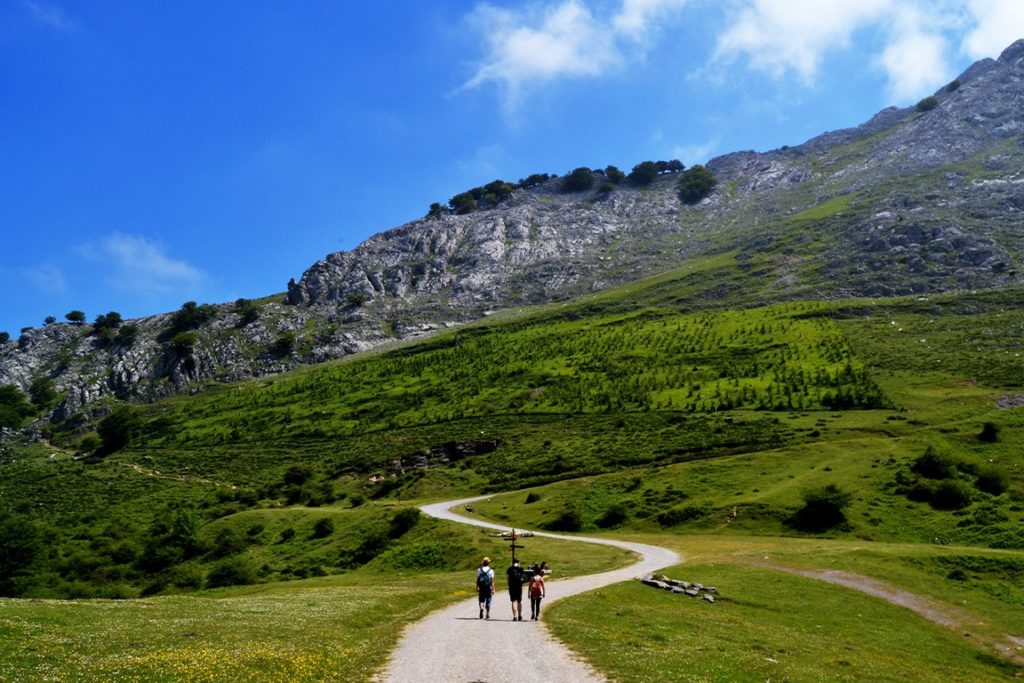
Visit Bizkaia.
Urban Adventures in Full Bloom
Bilbao’s summer walking scene extends beyond nature trails into urban exploration. The city’s official tourism walking routes connect the Guggenheim district with traditional neighborhoods, creating paths that showcase both architectural innovation and cultural continuity.
Water and Wine
Summer heat makes water-based activities particularly appealing. You can enjoy the Guggenheim Museum in Bilbao from a kayak. And the Urdaibai Biosphere Reserve near Bilbao offers canoeing experiences through protected wetlands where migratory birds create a constantly changing natural spectacle. These gentle waters provide perfect conditions for beginners while offering enough variety to engage experienced paddlers.

Canoeing next to the Guggenheim Bilbao. Photo: Ayuntamiento de Bilbao.
Seasonal Specialties
This year 2025 brings enhanced experiences as operators adapt to growing demand for active wine tourism across both territories. Many vineyards now offer sunrise cycling tours that begin before dawn, allowing riders to experience the peaceful morning vineyard atmosphere before the day’s heat builds.
Evening horseback rides through Rioja’s summer landscape create magical experiences as the low sun transforms the vineyard rows into golden corridors. These tours often conclude with outdoor tastings under the stars, where sommeliers explain how daylight hours influence grape development.
After hours of active exploration, nothing beats settling into one of Rioja’s spectacular wine bars overlooking the vineyards. These elevated terraces offer the perfect retreat to cool down, rest, and savor wines produced mere steps away from where you’re seated. The combination of estate wines paired with world-renowned Basque and Riojan cuisine creates an unparalleled culinary experience. Whether it’s pintxos crafted by Michelin-starred chefs or traditional slow-cooked lamb paired with reserve tempranillos, these vineyard wine bars represent some of the finest gastronomy on the planet.
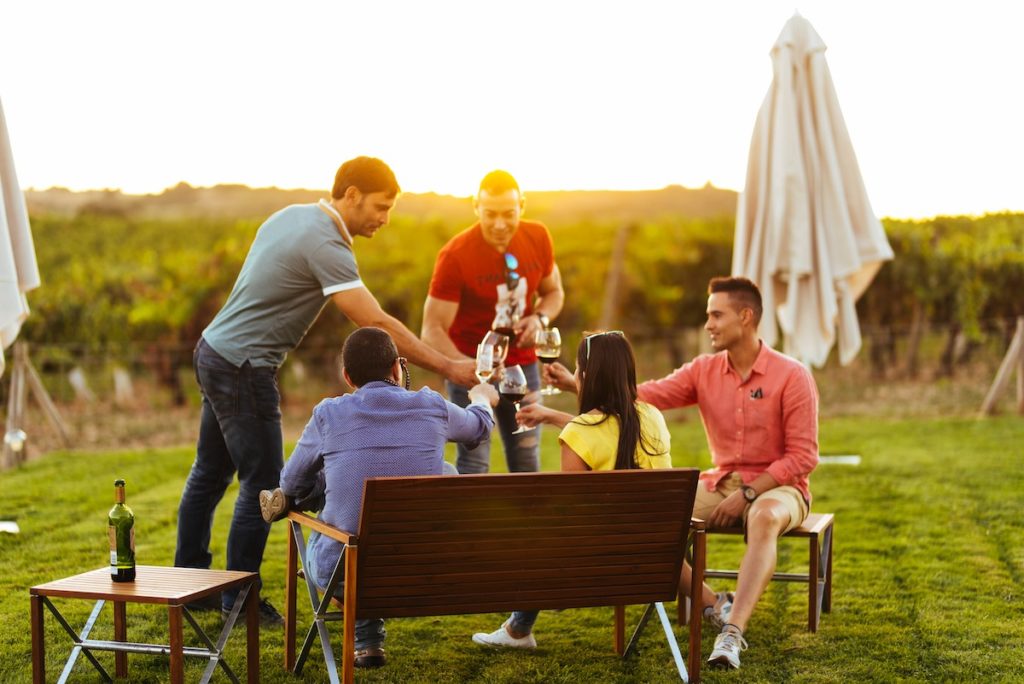
Campo Viejo Sunset.
Planning Your Active Summer
Whether you choose the mechanical advantage of e-bikes, the ancient partnership of horseback riding, or the simple pleasure of walking through landscapes shaped by human hands and natural forces, this Bilbao-Rioja wine tourism axis offers active experiences that connect you directly with the land that produces some of the finest wines of the world.
The vineyards are in full bloom, the trails are perfectly maintained, and the summer season provides ideal conditions for experiencing this Great Wine Capital Bilbao-Rioja as it was meant to be explored – actively, authentically, and with all your senses engaged.
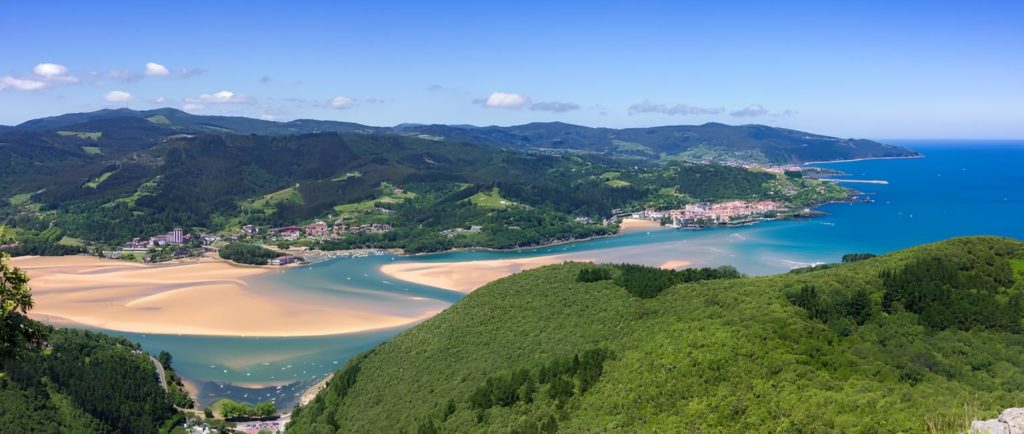
Urdaibai Biosphere Reserve.
Text by Liz Aldayturriaga
Learn more about Bilbao-Rioja Great Wine Capitals